If you’re interested in learning more about Pilates and whether it can help build muscle, you’ve come to the right place. In this friendly and informative blog post, we’ll discuss:
- The role of resistance training in muscle building
- The potential of Pilates for muscle growth
- Compare Pilates with other forms of resistance training
- The additional health benefits of Pilates
- Tips on incorporating Pilates into a muscle-building routine
- Address individual factors and busy schedules.
Let’s dive in!
The Role of Resistance Training in Muscle Building
To build muscle, incorporating resistance training into your exercise routine is a must. Whether you’re a seasoned athlete or just starting out, resistance training can help you achieve your muscle-building goals.
When you challenge your muscles against resistance, such as weights, bands, or your own body weight, you create small tears in your muscle fibres, which your body then repairs and rebuilds, ultimately making your muscles stronger and larger. This process is known as muscle adaptation or hypertrophy and it relies on progressive overload—gradually increasing the resistance or intensity of your workouts—to stimulate continued growth.
The key to making progress with resistance training is to practice progressive overload. This means gradually increasing the resistance or intensity of your workouts over time. As you challenge your muscles more and more, they will adapt and continue to grow. However, it is a fine balancing act between increasing the load on the muscle to stimulate growth and too much so they tear and you go backwards. This is where good education about resistance training and/or the advise of a qualified exercise professional is invaluable in achieving your goals.
If you’re new to resistance training, it’s important to start with a weight or resistance level that’s appropriate for your fitness level. Ask an exercise professional to assess your current strength level so that you start at the right level for you.
Can Pilates Build Muscle?
The answer is yes, but to a point. Mat based pilates is limited in resistance (usually body weight) so the load required to do the activity is limited. As a result, the ability to build muscle through mat based Pilates will plateau very fast.
You will improve your core stability, balance and movement co-ordination through mat based Pilates, however for the goal of building muscle, you do need more. You can still do a “hard” workout with mat Pilates, however, the effort required to participate in the class and the outcome of building muscle are not the same.
Reformer based Pilates program on the other hand are resistance based (using different weighted springs) to increase resistance load. This is great for loading up the stabilising and postural muscles that are required for good core stability and joint control.
This is the primary way we use the reformers in our centres, to improve the strength and control of the stabilising and postural muscles. Without these foundational muscles and joint control, larger and heavier training exercises, such as squats and deadlifts can increase the load on the joints uncontrollably, potentially leading to injury.
This is what we love about reformer based Pilates so much. However, again the ability for reformer based Pilates to build muscle is limited as the resistance of the equipment is limited as well. As a result, even with reformer Pilates, there is a plateau effect.
Resistance Equipment and reformer Pilates
The combination of reformer based Pilates AND classic strength and conditioning equipment is where the results are best (in terms of building muscle and in relation to performance). Reformer based Pilates creates the foundation of good joint stability and adding in classic strength and conditioning exercises, such as squats, deadlifts, chest press adds the required load to really build muscle. Like all good strength training programs, load management is extremely important. The priniciples of progessive overload is important and weights should be gradually and systematically increased as your strength and techinque improves.
Modifications and Variations
As you progress in your Pilates journey, you may find that some exercises become easier, and you’re ready for more of a challenge. Instructors can introduce modifications and variations to the exercises to increase the intensity and target specific muscle groups more effectively. These adjustments help to ensure that your muscles continue to be challenged, which can lead to muscle growth, in a safe and controlled manner.
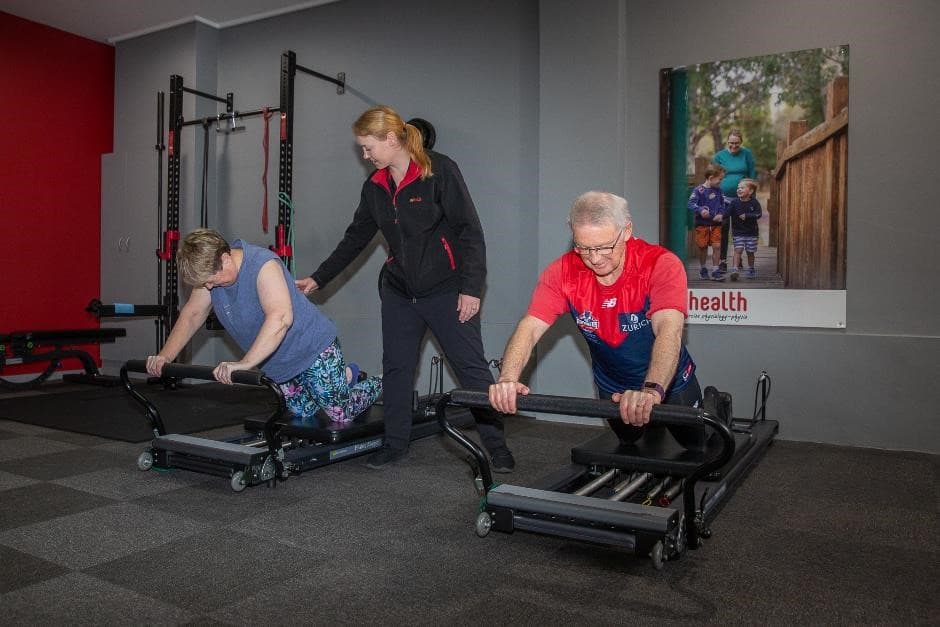
Pilates vs. Traditional Resistance Training
Pilates and traditional resistance training, like weight lifting, have their benefits and drawbacks. Pilates emphasizes whole-body strength, flexibility, and balance, which can improve overall functionality, reducing the risk of injury and contribute to a leaner, more toned appearance. However, Pilates may not provide the same level of muscle growth as traditional weight lifting, which focuses on isolating specific muscle groups and allows for a greater range of progressive overload.
A Comprehensive Overview of Pilates vs. Traditional Resistance Training:
Focus on Whole-Body Strength
Pilates is a unique exercise method that emphasizes whole-body strength. Unlike traditional resistance training, which often focuses on specific, stabilising muscle groups important for joint control, Pilates engages multiple muscle groups simultaneously which are the foundations for good moveemnt. This approach helps to develop a balanced and strong body, reducing the risk of injury and promoting overall functionality.
Flexibility and Balance
Pilates is well-known for its focus on flexibility and balance. By using controlled movements which allow improvements in flexibility as a result of more control over the joints in a larger portion of the range. It is counter intuitive, but joints that have good muscle control are more flexible because the body will “allow” you to move through a larger portion of the range as it feels in “control”. This not only makes daily activities easier but also can reduce the risk of injuries and improve athletic performance.
Leaner, More Toned Appearance
Many people who practice Pilates regularly report a leaner, more toned appearance. This is because Pilates exercises are designed to elongate and strengthen muscles, resulting in a sleeker, more defined physique. While traditional weight lifting can also help to develop muscle definition, Pilates offers a more balanced approach that targets the entire body.
Muscle Growth and Progressive Overload
One potential drawback of Pilates is that it may not provide the same level of muscle growth as traditional resistance training. Weight lifting focuses on isolating specific muscle groups, allowing for a greater range of progressive overload. This means that as you grow stronger, you can continue to increase the weight or resistance used in your exercises, which can lead to greater muscle growth over time. The great news is that incorporating a combination of Pilates and tradtional resistance based training have the benefit of improving joint control and stability as well as improving muscle growth. The outcome is faster improvements in both muscle growth and function, such as sport and physical performance.
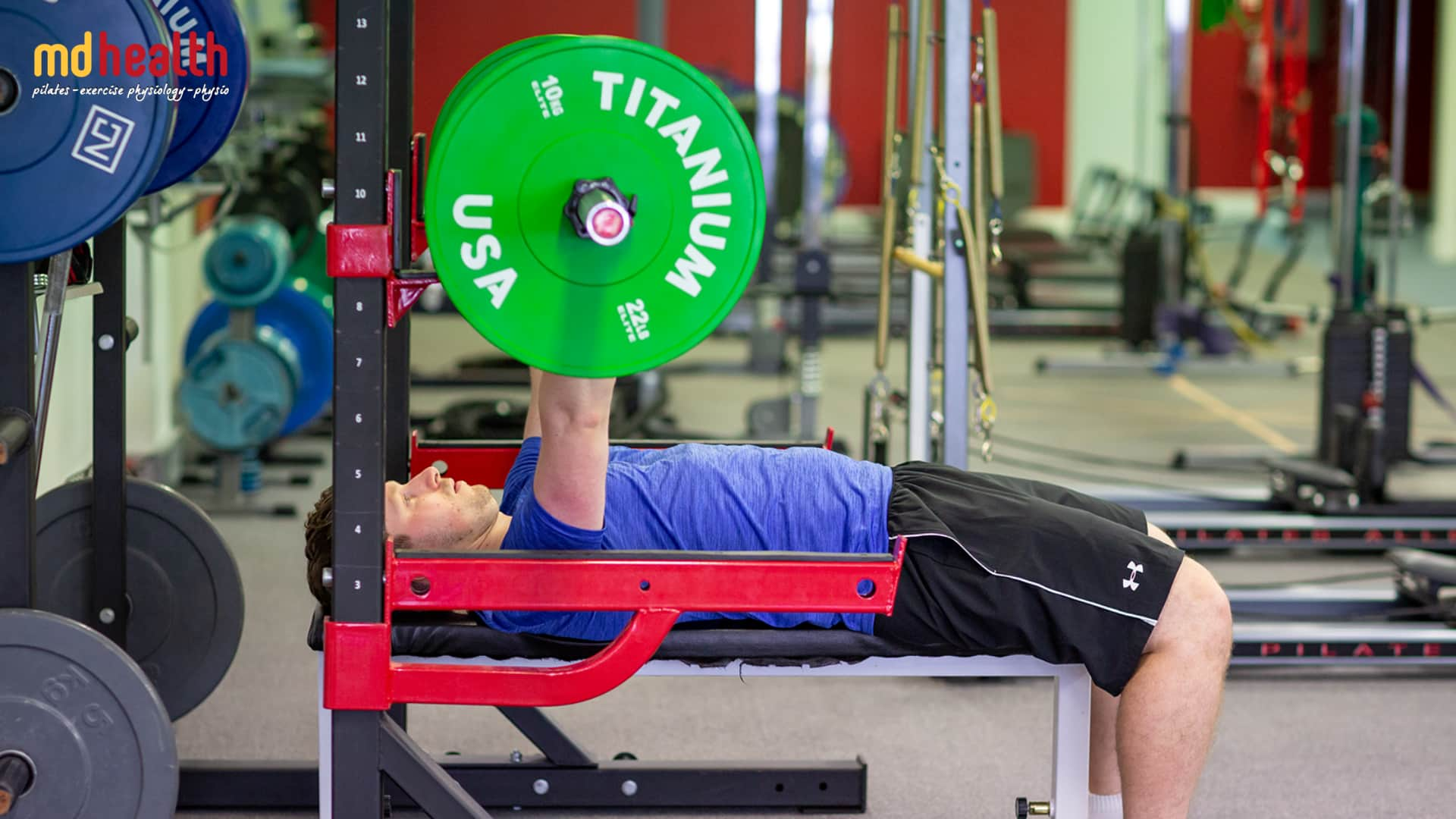
The Benefits of Pilates for Overall Physical Health
Pilates is a versatile and accessible form of exercise that offers numerous benefits for people of all ages and fitness levels. It focuses on building core strength, improving posture, increasing flexibility, and promoting mind-body awareness. Here are some key advantages of incorporating Pilates into your exercise routine:
Improved Core Strength
One of the main goals of Pilates is to build a strong, stable core. This helps to support your spine, prevent injuries, and improve your overall physical performance in various activities.
Enhanced Posture
Pilates exercises are designed to align the body and improve posture. This can help reduce the risk of injury and alleviate pain caused by poor posture, such as back and neck pain.
Increased Flexibility
The dynamic stretching and muscle lengthening techniques used in Pilates can help to increase your flexibility and range of motion. This is beneficial for injury prevention and overall mobility.
Better Balance and Coordination
Pilates challenges your balance and coordination through controlled movements that require focus and precision. Improving these skills can enhance your performance in other sports and activities.
Mind-Body Connection
Pilates encourages mindfulness, deep breathing, and concentration, promoting a strong connection between your mind and body. This can help reduce stress and improve mental clarity.
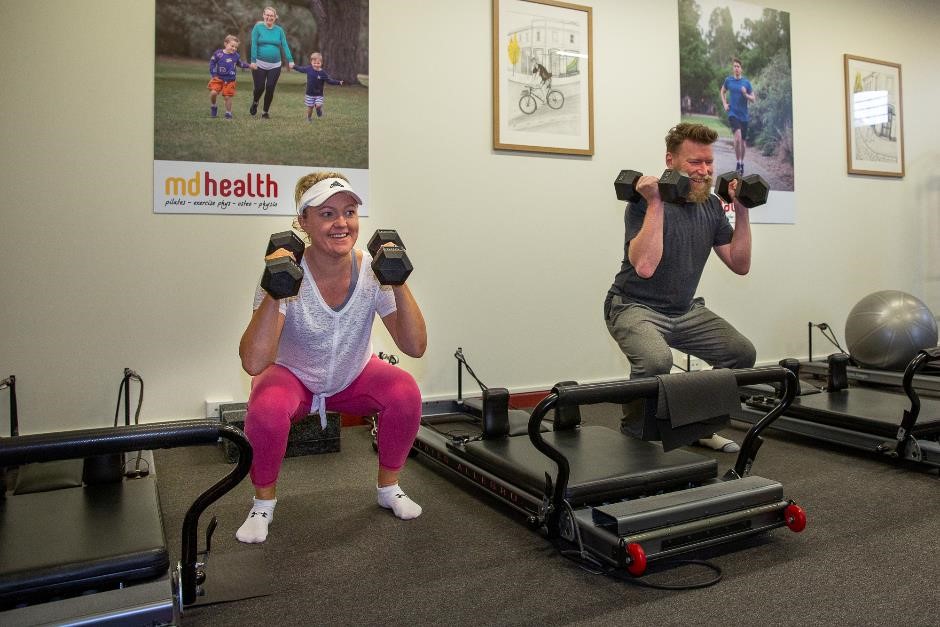
Incorporating Pilates into a Muscle Building Routine
To use Pilates as part of a comprehensive muscle-building plan, consider pairing it with other forms of resistance training, like weight lifting or bodyweight exercises. This combination can provide the best of both worlds: the functional strength and flexibility of Pilates, along with the muscle growth potential of traditional resistance training. Don’t forget the importance of proper nutrition, including adequate protein intake, to support muscle growth and recovery.
So, how can you incorporate Pilates into your muscle-building routine effectively? Here are some simple tips to get you started:
Start with a solid foundation
Before diving into more advanced exercises, make sure you have a good understanding of the basic Pilates principles, such as proper alignment, breathing, and muscle activation. This will ensure that you’re getting the most out of your workouts and minimizing the risk of injury.
Combine Pilates with resistance training
To maximise muscle growth, incorporate Pilates exercises into your regular resistance training program. For example, you can perform a Pilates sessions on your off days or add Pilates-inspired movements to your weightlifting routine, like the Pilates push-up or the single-leg stretch with added resistance.
Focus on quality over quantity
When performing Pilates exercises, emphasize proper form and technique over the number of repetitions. This will help to engage the correct muscle groups and promote functional strength.
Progress over time
As with any exercise program, it’s essential to gradually increase the intensity and complexity of your Pilates workouts. Incorporate new exercises, increase the resistance, or add more challenging variations to keep your muscles growing and adapting.
Don’t forget about nutrition
Proper nutrition plays a significant role in muscle growth and recovery. Make sure to consume adequate protein, carbohydrates, and healthy fats to support your muscle-building goals. Additionally, stay hydrated and get enough rest to help your body recover and grow.
Listen to your body
Every individual is different and it’s essential to listen to your body and adjust your routine accordingly. If you experience pain or discomfort during a Pilates session, consult with a qualified instructor (physiotherapist, exercise physiologist or osteopath) to address any underlying issues and ensure you’re performing the exercises correctly.
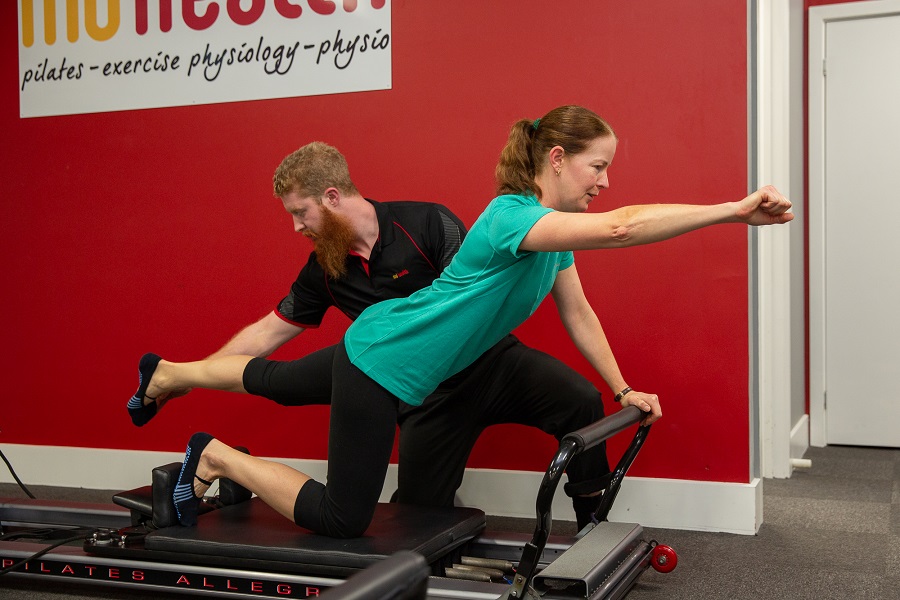
Individual Factors to Consider
The effectiveness of Pilates for muscle building will vary depending on your fitness level, age, and specific goals. Beginners or those with limited strength may see more noticeable gains from Pilates, while more advanced athletes may need to supplement their Pilates practice with other forms of resistance training to achieve significant muscle growth. Always listen to your body and consult with a fitness professional for personalised guidance.
Let’s breakdown about individual factors that can influence the effectiveness of Pilates for muscle building,
Fitness Level
The benefits you’ll experience from Pilates will largely depend on your current fitness level. If you’re a beginner or have limited strength, Pilates can be a fantastic way to build a strong foundation for muscle growth. As you progress, you may find that you need to incorporate other forms of resistance training to continue seeing significant gains.
Age
Age plays a role in how our bodies respond to exercise. Younger individuals may experience more rapid muscle growth compared to older adults. However, Pilates is still a fantastic option for people of all ages, as it promotes flexibility, balance, and overall physical wellness.
Specific Goals
Your personal fitness goals will also determine how effective Pilates is for muscle building. If you’re looking to increase overall body strength and flexibility, Pilates can be a great option. However, if your primary goal is to achieve significant muscle hypertrophy, you may need to incorporate additional resistance training exercises into your routine.
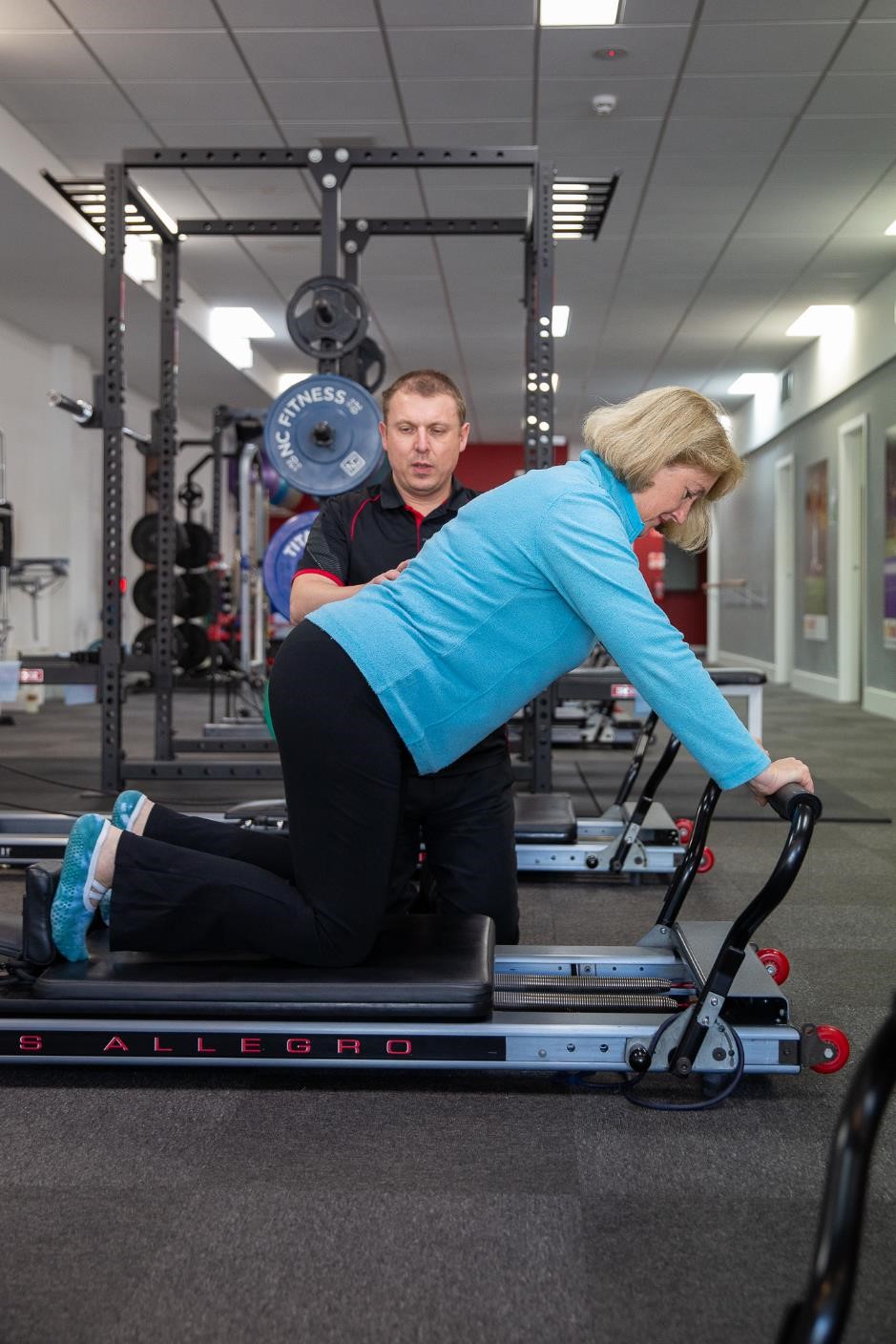
Incorporating Pilates into a Busy Schedule
We know life can get hectic, but that doesn’t mean you have to miss out on the many benefits that Pilates has to offer. Fitting Pilates into a busy schedule is easier than you might think. If you’re struggling to find 30 minutes in your day for Pilates, consider breaking your workout into shorter sessions. For example, you could do 15-20 minutes in the morning, another 15-20 minutes during your lunch break or in the evening.
This approach not only makes it easier to fit Pilates into your daily routine, but can also help you stay energised and focused throughout the day. In addition, you don’t have to do Pilates every day to be effective. 2-3 times a week is great. Like any forms of training, the rest from the activity is just as important as the workouts to get the maximum benefit.
Combine Pilates with Other Workouts
Also, one way to make the most of your workout time is to combine Pilates with other forms of exercise. For instance, you could warm up with a 10-minute cardio session, followed by a 20-minute Pilates workout, and finish off with some stretching or yoga. This way, you’ll be able to enjoy a well-rounded workout without sacrificing too much time.
Make it fun!
Turn your Pilates practice into a fun social activity by inviting friends, family, or coworkers to join you. Not only will you enjoy the company, but having others around can help keep you motivated and accountable. Plus, you can all benefit from the physical and mental advantages that Pilates offers. Overall, It’s essential to prioritise your health and well-being, and that includes making time for exercise.
Treat your Pilates sessions as important appointments, and schedule them into your calendar just like any other commitment. By setting aside dedicated time for Pilates, you’ll be more likely to stick to your practice and reap the rewards of a stronger, more flexible body and a calmer mind.
In conclusion, both Pilates and traditional resistance training offer unique benefits. Pilates is an excellent choice for those looking to improve whole-body strength, flexibility, and balance while enjoying a leaner, more toned appearance.
On the other hand, traditional weight lifting may be more suitable for those looking to maximise muscle growth through progressive overload. It’s essential to consider your individual fitness goals and preferences when choosing the best exercise method for you.
If you’re interested in finding out more about Pilates and how it can benefit you, I invite you to visit MD Health or get in touch with one of our friendly physiotherapists or exercise physiologist. We’d be more than happy to help you explore the world of Pilates and guide you on your journey to improved strength, flexibility, and balance. Happy training!
Do you have any questions?
Call us on (03) 9857 0644 or (07) 3505 1494 (Paddington)
Email us at admin@mdhealth.com.au
Check out our other blog posts here
Our clinical staff would be happy to have chat if you have any questions.
Take the first step to a healthier you!
Would you prefer for someone to contact you to book your FREE Full Body Assessment*?
Please fill in this form and someone from MD Health will be in touch with you soon.
Alternatively please call us on:
07 3505 1494 (Paddington – Brisbane (QLD) Clinic)
Or email us:
admin@mdhealth.com.au (VIC) paddington@mdhealth.com.au (QLD)
*Please note only the Full Body Assessment is a FREE service. The Full Body Assessment is for new clients at MD Health or returning clients who haven’t been in for 6 months or longer who intend to particpiate in our 13 Week Clinical Pilates Program**.
For all new clients who wish to come in for a one-off, casual or adhoc basis for Physiotherapy or Exercise Physiology the Initial Physiotherapy or Initial Exercise Physiology appointment is a paid service.
** The 13 Week Clinical Pilates Program at MD Health is not a lock in contract and you are not required to attend for the full 13 weeks if you do not wish.
This site is protected by reCAPTCHA and the Google Privacy Policy and Terms of Service apply.



